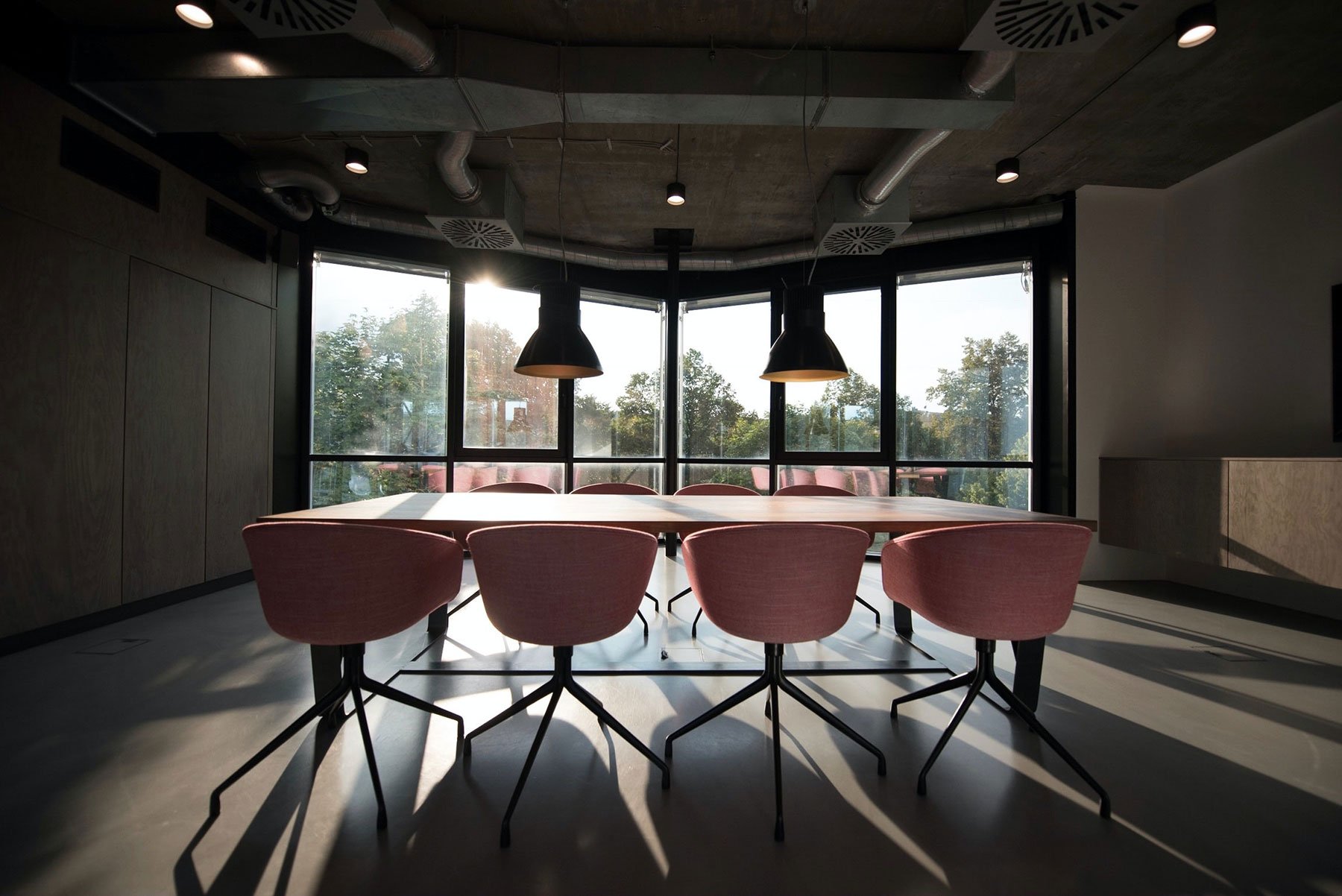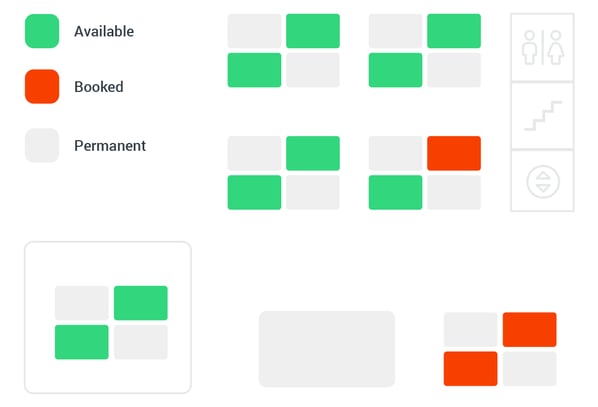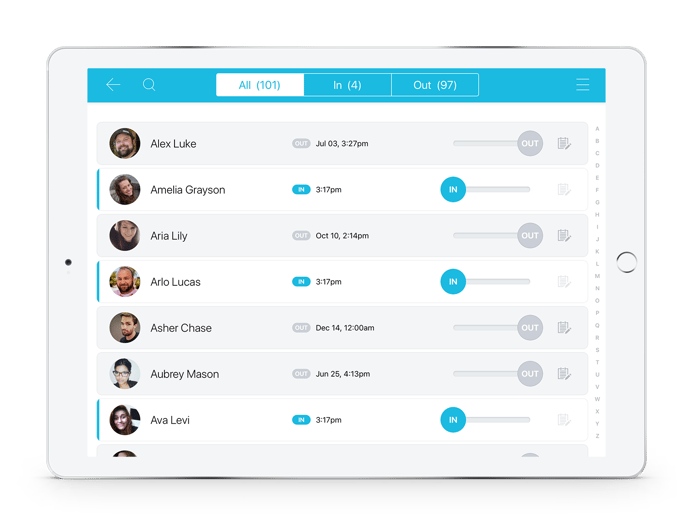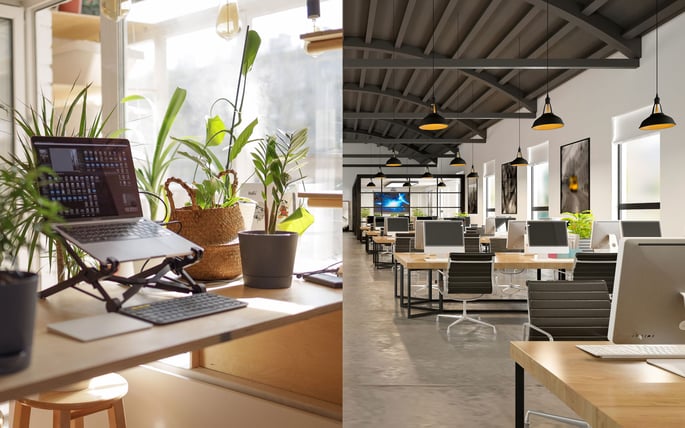Why Having a Physical Office Still Matters

During the 21st century, remote working has become more commonplace in our lives—and it’s not difficult to see why. Internet connections have improved dramatically in many parts of the world, and collaborative technology has made it easier to keep in touch with team members from multiple locations.
When COVID-19 struck, many businesses had to adopt a remote-only model overnight. Studies show that many employees would like to keep remote work in some capacity, which raises the question: what does the future of the physical or traditional office look like?
Extensive research conducted throughout 2020 and 2021 found that many employees wanted to continue to work remotely for at least a portion of their week once things "returned to normal".
One of the most extensive surveys was this one carried out by Deloitte. The financial consulting firm discovered that 45% of research participants expected to work from home due to internal regulations after COVID-19. Meanwhile, one-fifth expect that they’ll need to go back to the office to some extent.
Working remotely has several benefits, such as saving money on travel costs and working at flexible times that enable employees to be more productive. While it's clear many businesses won’t return to five-day workweeks in the office, having a physical workplace has several benefits.
Why a physical office still matters
A sense of community and belonging
As social creatures, feeling like we belong in our surroundings is crucial to our overall happiness. One of the ways people feel a sense of community is in the office, and that increased employees’ happiness by 12% in 2020, according to a Glint survey.
While it’s not impossible to feel a sense of belonging when working remotely, it can be challenging. For example, many employees struggle with isolation; talking via Zoom is not the same as real-life interaction and connection.
Giving employees the option to gather in the office (where possible) gives people a place for social interaction and allows them to better embrace company culture and connect with coworkers.
Innovation and collaboration
For businesses to continue innovating in their respective industries, their employees must think clearly and identify problems and solutions. Many people find bouncing ideas off each other a useful way to do this, and it’s much easier to have these kinds of chats in-office than it is remotely.
Businesses can support in-office collaboration; 55% of companies want to make more spaces for this to happen in their offices, according to Knight Frank. Creating areas where people can brainstorm and discuss ideas in a pressure-free environment helps enhance creativity and the physical office is the obvious choice.
Productivity
Several studies have highlighted that many employees are more productive when they work from home. While that may be true, it’s by no means universal. For some people, working remotely can cause them to feel like they’re boxed in and they can struggle without a sense of routine.
Considering the many different working styles that exist within most companies, it’s essential to try to accommodate everyone and ensure they have the best work arrangement possible to be their most productive. If you choose not to offer this option, your best talent could leave for a company that does.
How to make your office space more flexible
It's clear that having a physical space is still worthwhile, it might just need a few tweaks to ensure your team is making the most of it.
Utilize technology
Technology plays a crucial role in helping companies work effectively across multiple locations. One of the best ways to make your office space more flexible is to change its layout to cater to hybrid work. Desk booking software can ensure that you never run over your capacity.
 With desk booking software, you can easily assign the appropriate working space for employees working alone or as a group. You can also implement social distancing measures if required—helping people feel more comfortable and to comply with local regulations when in effect.
With desk booking software, you can easily assign the appropriate working space for employees working alone or as a group. You can also implement social distancing measures if required—helping people feel more comfortable and to comply with local regulations when in effect.
A workplace sign in system that helps employees sign in and out easily and gives you an easily accessible in out board is also a great option for the modern office. Both of these enable your team to see and know when colleagues are available, helping improve collaboration on projects and provide accurate information in case of an emergency.

Communicate clearly about working agreements
Transparent communication in business relationships is essential. Once your work agreement strategy has been determined, communicate it clearly to team members. This will help to ensure that everyone knows what to expect, and allows for planning.
Give employees the choice to work where they want
Many of the world’s largest companies like Spotify, Slack, Apple, and Twitter have given their employees the choice and freedom to work wherever they want.
Part of the reason these businesses have been so successful is that they understand that people have different needs and working styles, being more flexible where possible will help to increase employee happiness.

The physical office space is here to stay
Despite talk about the traditional physical office being a thing of the past, that’s not necessarily true. For some employees, going into the office equals more productivity and makes it easier for them to remain visible.
In-office work can help foster a sense of community and improve the company’s culture. Moreover, it can improve collaboration and innovation.
By investing in suitable technology like digital in out boards, a desk reservation system and a secure staff sign-in solution, you provide the flexibility needed to continue to operate efficiently in the long run, making the most of the benefits that remote and in person work offer.



-929560-edited-003563-edited.jpg)





 Germany - Deutsch
Germany - Deutsch